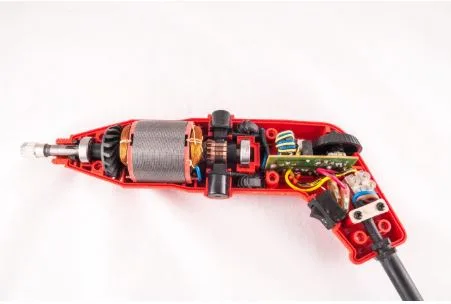How to Store and Insure Your Gold Eagles Safely
Owning a 1 oz American Gold Eagle means holding both beauty and value in your hands, representing significant wealth in compact form. The concentration of value in these small coins creates security concerns that less-valuable possessions don’t raise. A few Gold Eagles can represent tens of thousands of dollars fitting in your pocket, making proper protection essential rather than optional.
But protecting it properly is crucial for maintaining value and preventing devastating losses from theft, damage, or disasters. Horror stories of uninsured collections lost to fires, floods, or burglaries remind collectors that physical precious metals require thoughtful security planning. The tangible nature that makes gold appealing also creates vulnerabilities that paper assets don’t face.
Storing and insuring gold coins the right way guards against theft, damage, and market loss while keeping access easy and peace of mind intact. Understanding best practices for 1 oz American Gold Eagle protection helps owners balance security with convenience. Here’s how to safeguard gold investments without creating fortress-like arrangements that make enjoying or accessing holdings impractical or unnecessarily expensive.
Safe Storage Options: Home vs. Depository Vaults
Home safes provide convenient access but require proper installation, fire protection, and theft deterrence through quality construction. Bolted safes weighing hundreds of pounds resist theft better than small boxes criminals carry away easily. Fire ratings protect against heat damage during house fires that could melt or damage coins. Location matters too, with safes hidden or positioned where burglars won’t easily find or access them.
Bank safe deposit boxes offer security through vault protection and limited access that home storage cannot match. Banks provide serious security that home safes struggle to equal at reasonable costs. Drawbacks include limited access during banking hours and potential government seizure risks that concern some investors. Boxes also lack insurance coverage, requiring separate valuable items policies covering contents.
Private depository services specialize in precious metals storage providing vault security, insurance, and flexible access options. These facilities offer institutional-grade security with segregated storage ensuring your specific coins remain yours rather than being pooled. Costs vary but typically include storage fees and insurance as package deals. Depositories work well for large holdings where home storage becomes impractical or risky.
How to Insure Your Gold for Full Market Value
Homeowners insurance typically caps precious metals coverage at $1,000-$2,000 without separate valuable items riders or endorsements. Standard policies provide minimal protection for gold collections, leaving owners drastically underinsured if losses occur. Understanding policy limits prevents discovering inadequate coverage only after suffering unrecoverable losses that insurance won’t cover fully.
Scheduled personal property endorsements specifically list gold coins with agreed values providing full coverage without deductibles. These riders document individual coins or collections with current market values ensuring replacement at actual worth. Appraisals or purchase receipts establish values that insurance companies accept, creating clear coverage without disputes during claims.
Collectibles insurance specialists offer policies designed specifically for precious metals and rare coins providing comprehensive coverage. These specialized insurers understand numismatics and precious metals markets, offering terms that general insurers don’t. Coverage includes theft, damage, loss, and sometimes even market value appreciation if coins increase in value between policy inception and loss events.
Proper Handling to Preserve Condition and Luster
Cotton gloves prevent oils and acids from skin contact damaging coin surfaces and reducing grades over time. Handling gold barehanded leaves fingerprints and contaminants that tarnish surfaces or create spotting. Professional numismatists always use gloves when handling valuable coins, and collectors should adopt the same practice for holdings they want to preserve in top condition.
Holding coins by edges rather than surfaces minimizes contact with delicate fields where marks show prominently. Even gloved handling should avoid touching faces where fingerprints, pressure marks, or scratches reduce eye appeal and grades. Proper technique becomes automatic with practice, protecting coins from handling damage that accumulates through careless repeated contact.
Protective holders or capsules shield coins from environmental damage and handling accidents that would otherwise gradually degrade condition. Air-tight capsules prevent toning, oxidation, and contamination that occur in open air over years. Individual protection also prevents coins from contacting each other causing bag marks that reduce grades. Quality holders cost little compared to value they preserve through proper protection.
Creating a Secure, Organized Precious Metals Inventory
Documentation with photos, serial numbers, and grades creates records proving ownership and values for insurance claims and estate planning. Detailed inventories help heirs understand what they’re inheriting and prevent disposal of valuable coins as common items. Photos show condition at specific times, documenting that damage occurred during losses rather than pre-existing conditions insurance might dispute.
Digital records stored securely off-site ensure documentation survives disasters destroying physical records along with collections. Cloud storage, safe deposit boxes, or trusted relatives can hold backup documentation that remains accessible if primary records are lost. Redundant record-keeping prevents total information loss that complicates insurance claims and estate settlements enormously.
Regular inventory updates reflecting acquisitions, sales, and value changes maintain accurate records supporting insurance coverage and estate valuations. Coins appreciate or depreciate over time, and insurance coverage should adjust accordingly. Annual reviews ensure coverage keeps pace with market values, preventing underinsurance that leaves owners bearing losses insurance should cover fully.
Conclusion
Best practices for safeguarding gold investments balance security, accessibility, and cost through thoughtful planning and proper implementation. Owners of the 1 oz American Gold Eagle should treat storage and insurance as essential parts of responsible investing rather than optional afterthoughts. Protection preserves wealth and provides peace of mind that holdings remain secure.
The combination of proper storage, adequate insurance, careful handling, and organized documentation protects investments comprehensively. While perfect security is impossible, reasonable precautions dramatically reduce risks of losses that would otherwise wipe out years of careful accumulation. Treating gold security seriously from the beginning prevents the regret and financial pain that comes from discovering inadequate protection only after suffering preventable losses.




